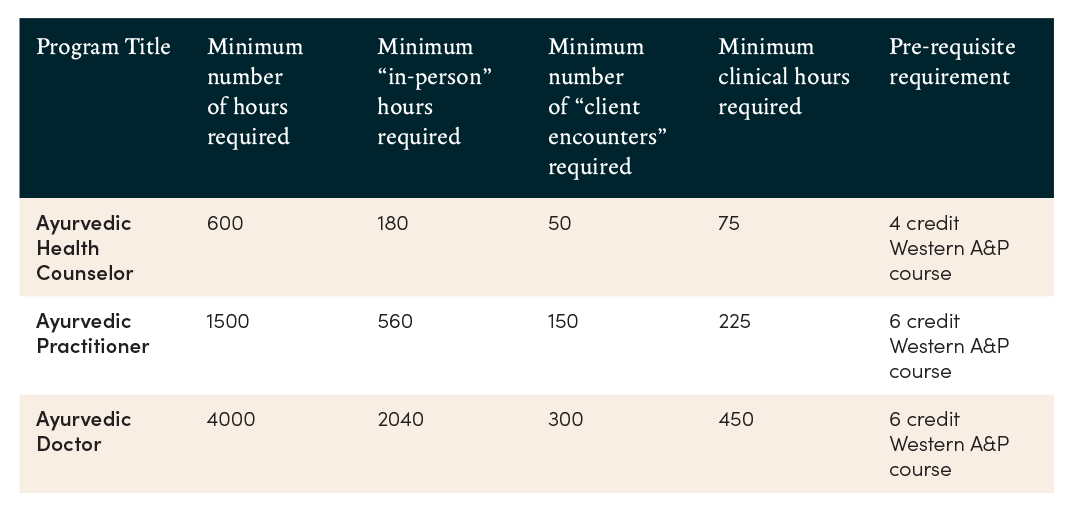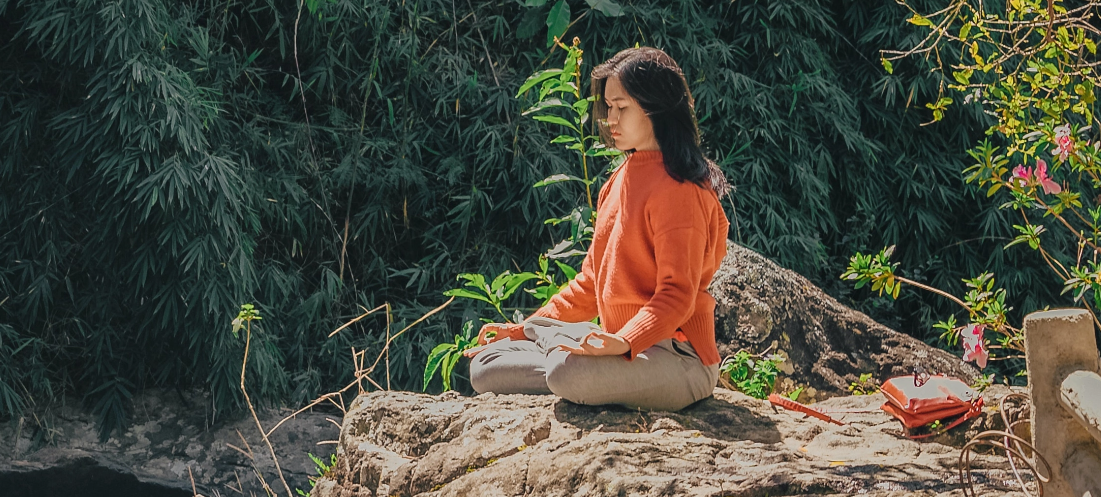
- Ayurveda, Ayurvedic, Ayurvedic Education, Ayurvedic Practitioner, Ayurvedic Programs, Certification, Curriculum, Lineage, NAMA, Post Graduation, Steps

You love the idea of learning Ayurveda and sharing this ancient wisdom to support the healing of others, but you’re curious what that looks like in real life – how long does it take to become an Ayurvedic Practitioner and what is the process? Let’s break it down.
(If you’re wondering what an Ayurvedic Practitioner is and does, check out this blog)
We’ll start with potentially the most important step along the way that also determines the length of your education: your school.
This is the biggest decision you’ll make along the path to becoming an Ayurvedic Practitioner. Here are the primary factors to consider:
The Sanskrit word “guru” is used to refer to one’s teacher – it beautifully translates to dispeller of darkness or ignorance and may be understood as the one who brings us into the light.
Who you choose to learn Ayurveda from, their lineage and the nature of their heart, shapes not only how you understand Ayurveda and come to practice but how you perceive and understand yourself and the world around you.
Practicing Ayurveda isn’t just a profession but a way of life. And your teacher isn’t just an instructor but an illuminator of the guru within – the light and guide that exists in each of us, always. Don’t forget the weight of this as you make your decision.
Tips for getting to know the teacher, lineage and school:
Full-Time Study:
A full-time Ayurvedic Practitioner program, such as the one offered through the Ayurvedic Institute, takes two years to complete. The first year is the Ayurvedic Health Counselor level, and the second year is Ayurvedic Practitioner level. This format is immersive, rigorous, and highly transformative. [link to other blogs on AI education?]
Part-Time Study:
There are many other schools that offer part-time Ayurvedic Practitioner programs, which take much longer to complete but allow you to fulfill other responsibilities simultaneously. This format allows for digestion over a much longer period of time though is often less immersive.
Although Ayurveda isn’t a licensed form of medicine in the United States, most of the Ayurvedic schools here in the U.S., including the Ayurvedic Institute, structure their Ayurvedic Practitioner classes around the standards of the National Ayurvedic Medical Association Certification Board. The below table from NAMA’s website shows the required hours for each level of education:

*A&P = Anatomy and Physiology
If you wish to become a certified Ayurvedic Practitioner through NAMA, you must choose a program that meets their standards and pass the Ayurvedic Practitioner certification exam following completion of your program. Please check out their website for up to date certification exam pricing and information: https://www.namacb.org/ayurvedic-practitioner
For some, this is the factor that creates the greatest obstacles or holds the greatest sway.
Many programs have been temporarily granted online permissions due to COVID-19, so check each school’s website or admissions office for the most up to date information and know that next year may be different.
Students find Ayurveda at all ages and stages of life – whether you’re straight out of high school, post-retirement, or switching careers, finances inevitably impact your school selection. If you’re attending a program in person, the cost of living at the school’s location in addition to the city’s overall appeal are additional important factors to weigh.
Check each Ayurvedic Practitioner school’s website for tuition as well as potential scholarship or grant availability.
Especially for those of you entering this field of holistic health of body, mind and spirit, insight is undeniably important. Perhaps your heart and gut have made a decision even though your brain is pushing another one…
At the end of the day, follow your intuition – it is the ultimate form of guru within.
Major congrats – you’ve made your decision! Now it’s time to make sure you meet the admission criteria and begin the application process.
Often this entails a written application and essay as well as an interview of some kind.
Vasant Lad, BAM&S, MASc always says, “Anything worthwhile takes a while” and the study of Ayurveda is no different.
Immerse yourself in your studies as well as living and breathing what you’re learning – experiment with different doshic foods, spices, herbs, oils, breathing exercises and forms of meditation.
Make your Ayurvedic Practitioner education experiential, and amidst any stress that may arise from the amount of information you’re expected to learn or the tests for your understanding, remember your deeper “why” for studying Ayurveda and your stress will melt away.
Being NAMA certified shows prospective clients that you are committed to continuing your education and that you received the approved standard of Ayurvedic Practitioner education by the largest certifying organization in the U.S. That being said, many clients are unfamiliar with Ayurveda and/or will look at the credibility of the school from which you graduated rather than if you took another exam post-graduation.
As Ayurveda continues to gain popularity in the United States, there is now the amazing possibility of joining a pre-existing practice or clinic as an Ayurvedic Practitioner. Many graduates also choose to start their own private practices or integrate Ayurveda into their previous practice – whether it’s massage, yoga, acupuncture, western herbalism, chiropractic, physical therapy, counseling, or western medicine.
In addition to seeing clients, many Ayurvedic Practitioners also teach, write or educate on Ayurveda in one way or another. Many will work at existing Ayurvedic schools or programs, supervise students in school clinics, write books or other copy, offer classes, run cleanses, sell products…the possibilities are truly endless.

The spiritual journey starts here

Alex is an Ayurvedic Practitioner with AyurPrana, she supports Vasant Lad in his consultations, and she moderates AyurPrana’s seasonal cleanses. Alex is also a faculty member at The Ayurvedic Institute, where she teaches Clinical Assessment of Srotamsi and Pathophysiology II and manages student clinic. Alex loves kids, hot drinks, and frolicking in the sunshine.